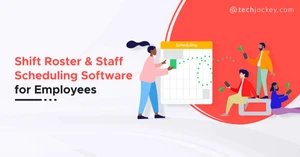Best Scheduling Software
(Showing 1 - 20 of 23 products)

iMRP
Brand: ImproveFactory
(0 user reviews)
IMRP helps businesses enhance efficiency and coordination in their manufacturing operations. Whether you need to analyze constraints, evaluate plans rapidl... Read More About iMRP
Price On Request

BizScheduler
Brand: BizScheduler
(0 user reviews)
Maximize operational efficiency with BizScheduler and make your business thrive.... Read More About BizScheduler
Price On Request

Skedda
Brand: Skedda
(0 user reviews)
Streamlines the booking of desks and meeting rooms, enhancing productivity and workplace logistics for organizations.... Read More About Skedda
$99

Tilos
Brand: Trimble
(0 user reviews)
Tilos is a linear scheduling software suitable for construction projects. It has features like visual project management and resource handling.... Read More About Tilos
Price On Request

ControlBoard
Brand: Congistics
(0 user reviews)
ControlBoard is a scheduling software that helps businesses efficiently manage their tasks, projects, and resources through intuitive control and organizat... Read More About ControlBoard
Price On Request

Saviom
Brand: Saviom Software
Saviom offers a comprehensive suite of features, including resource scheduling, forecasting, role-based access, bench management, reporting & analytics, ca... Read More About Saviom
Price On Request

Float
Brand: Float
(0 user reviews)
Helps teams allocate tasks, track time, and manage resources efficiently, allowing for real-time adjustments to schedules and improved collaboration.... Read More About Float
$8 /User/Month

Vizitor Meeting
Brand: Vizitor
(0 user reviews)
Vizitor Meeting Management Software streamlines visitor check-ins with a user-friendly digital system that enhances security and efficiency.... Read More About Vizitor Meeting
₹1,250 /Month

Abitzu
Brand: Abitzu Software
(0 user reviews)
Abitzu is a software developed for Spa and Salon owners to streamline their daily operations. The software for salon allows users to transfer their operat... Read More About Abitzu
₹1,000

Lunacal Ai
Brand: Lunacal Private Limited
(0 user reviews)
Lunacal AI turns your calendar into a branded booking page with features like team routing, automated reminders, and client intake forms.... Read More About Lunacal Ai
$10 /Month

Humanity
Brand: HUMANITY
Generate conflict-free employee schedules in just a few clicks, factoring in employee skills, availability, and location. Reduce the amount of time spent c... Read More About Humanity
Price On Request

Setmore
Brand: Setmore Appointments
Setmore is a user-friendly appointment scheduling software that empowers businesses to efficiently manage appointments, bookings, and customer interactions... Read More About Setmore
$12 /User/Month

Robin Workforce
Brand: Robin Powered
(0 user reviews)
Robin Workforce Management Software streamlines employee scheduling, time tracking, and resource allocation for optimized workforce productivity.... Read More About Robin Workforce
$419 /month

Primus KRONO
Brand: ACCA
PriMus KRONO is a comprehensive construction management software that offers optimized material control and unified planned and works execution handling.... Read More About Primus KRONO
€14 /month

Service Ledger
Brand: Service Ledger
(0 user reviews)
Service Ledger Field Service Management Software streamlines your field operations for maximum efficiency, enabling seamless scheduling and real-time job t... Read More About Service Ledger
Price On Request

Aladtec
Brand: TimeClock Plus
(0 user reviews)
Aladtec Employee Scheduling Software streamlines staff scheduling and communication, ensuring efficient workforce management for organizations.... Read More About Aladtec
Price On Request

Appspace
Brand: Appspace
(0 user reviews)
Appspace is a cloud-based workspace management platform that integrates digital signage, employee communication tools, and space management features to cre... Read More About Appspace
$41 /Month

Dayshape
Brand: Dayshape
(0 user reviews)
DayShape offers features like resource scheduling, time tracking, and reporting to help businesses optimize their workflows and manage their teams effectiv... Read More About Dayshape
Price On Request
- 1
- 2
-
Last Updated on : 08 Dec, 2025
Scheduling Software Comparison











